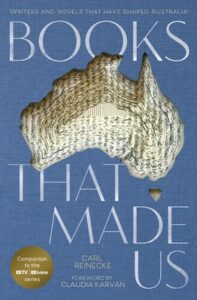More Gemini on misleading Australian fiction
Several Australian historical fiction novels are known to blur the lines between fact and fiction, often sparking debate among historians and readers. Some of the most notable examples include Picnic at Hanging Rock by Joan Lindsay, which is often mistaken for a true story, and Kate Grenville‘s The Secret River, which has been both praised for its historical detail and criticized for its fictionalized portrayal of colonial history.
Examples of Australian Historical Fiction Known to Mislead:
- Picnic at Hanging Rock by Joan Lindsay:This novel, about the disappearance of schoolgirls on a Valentine’s Day picnic in 1900, is often cited as an example of a fictional work that has been mistaken for a true story. The ambiguity of the ending and the realistic setting contribute to this perception.
- The Secret River by Kate Grenville:This novel tells the story of a convict transported to Australia who becomes involved in the dispossession of Aboriginal people. While based on historical events and research, the novel has been criticized for its fictionalized portrayal of the past, particularly its simplification of complex historical issues.
- The Light Between Oceans by M.L. Stedman:This novel, set on a remote Australian island, explores themes of love, loss, and morality. While a compelling story, it also fictionalizes a specific historical context and can be seen as misleading in its portrayal of certain aspects of life in that era.
- The Thorn Birds by Colleen McCullough:This sprawling saga of a Catholic priest and a family in the Australian outback is a popular example of historical fiction, but it has also been criticized for its romanticized and sensationalized portrayal of the historical period and social issues.
Why these novels mislead:
- Historical Setting and Detail:These novels often use real historical settings and events as a backdrop, which can lead readers to assume the characters and their stories are also based on fact.
- Ambiguity and Open Endings:Novels like Picnic at Hanging Rock with ambiguous or open endings can create a sense of mystery and leave readers unsure whether they are reading fiction or a true account.
- Authorial Intent:Authors may intentionally blur the lines between fact and fiction to create a more engaging or thought-provoking reading experience. However, this can also lead to misinterpretations of the historical context.
- Romanticization and Sensationalism:Some historical fiction novels may romanticize or sensationalize certain aspects of the past, which can distort the reader’s understanding of the complexities and nuances of the historical period.
In conclusion, Australian historical fiction offers a rich and engaging way to explore the past, but it’s important for readers to be aware that these novels often blend fact and fiction, and may not always present a fully accurate or nuanced picture of history, according to book reviews.

